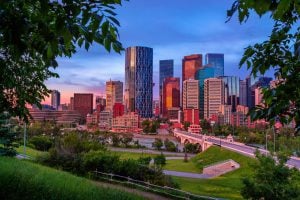At 7,630 km², Algonquin Provincial Park is one of the largest provincial parks in the country – it’s even bigger than Prince Edward Island. All that space makes the park a sanctuary for diverse wildlife and the people who love to watch them. Of the animals that call the park home, there are 40 different mammals, over 30 kinds of reptiles and amphibians, and more than 130 breeding birds, many of which are easily viewed from the Highway 60 Corridor.
In the autumn of 2016, Canadian Geographic sent photographer (and Can Geo Photo Club member) Megan Lorenz into the park to capture a bit of what makes Algonquin Provincial Park so special. Her photos appear in the January/February 2017 issue of Canadian Geographic alongside an essay by Roy MacGregor.
Here, Lorenz talks about what it was like to go on assignment for the magazine and shares advice for novice photographers.
On what it was like to go on assignment in the park
We picked a bad time to go. There was a hurricane warning. I had a tree come down on my tent in the middle of night. I was inside the tent and I heard the crack and automatically went to protect myself and it came right down on me. It’s always a good idea to be prepared; luckily I had duct tape, which fixes everything.
As far as the assignment, it was a really good thing for me. I tend to get stuck into one particular style and I tend to go for the same subjects that I’m passionate about. So this gave me an opportunity to go and explore different things I hadn’t done before. Different trails, different animals. It was nice to focus and think about the landscapes more.
On photographic challenges
It’s always a little bit difficult in Algonquin because it is so large. Going on a single trail can take up a good chunk of the day. For the landscapes you don’t even have to be on the trail; a bunch of mine were taken right on Highway 60. Some were off on the trails, but the shorter trails. It’s about knowing where to be, and pure luck.
Sometimes it’s difficult. I was out shooting recently when it was -25. Those days are really tough. I just have to keep the final goal in mind: getting a photo I haven’t been able to capture before. There’s some photos I’ve been chasing for four or five years. But other than the rain and tornado it wasn’t too bad when I was in Algonquin.
On her favourite photo from the assignment
Funnily enough it would be the Muskoka chair. That was just a really nice peaceful moment. After taking the photo I was able to just relax and take in the view. Sometimes when you’re on assignment you don’t always get a chance to do that.














